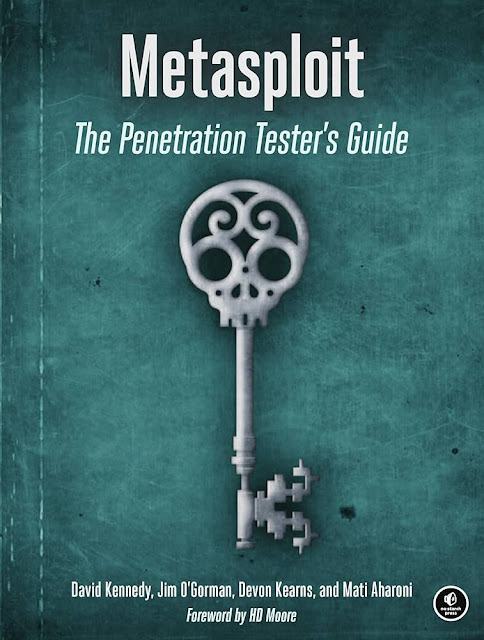Search This Blog
Welcome to my blog! I'm Adi, a passionate cybersecurity enthusiast dedicated to helping others navigate the complex world of cybersecurity. I write in-depth technical blogs, review essential cybersecurity books, and provide valuable insights and resources for both beginners and professionals. My goal is to empower individuals to enhance their skills, stay updated on the latest trends, and succeed in their cybersecurity careers. Whether you're just starting out or looking to deepen your knowledge
Featured
- Get link
- X
- Other Apps
Top 7 Books for Application Security Engineers
In the fast-evolving world of cybersecurity, staying updated with the latest trends, techniques, and tools is crucial for any application security engineer. Whether you're a beginner or a seasoned professional, the following seven books offer invaluable insights into building secure systems, understanding cryptography, and defending against web-based threats.
1. Security Engineering: A Guide to Building Dependable Distributed Systems by Ross Anderson
Ross Anderson's "Security Engineering" is a comprehensive guide that delves into the principles and practice of designing secure systems. The book covers a broad range of topics, including:
- Security policies and mechanisms
- Cryptography and its applications
- Secure distributed systems
- Secure software development practices
Anderson's extensive knowledge and real-world examples make this a must-read for anyone looking to build robust and secure systems.
2. Applied Cryptography: Protocols, Algorithms, and Source Code in C by Bruce Schneier
Bruce Schneier's "Applied Cryptography" is a seminal work that provides a deep dive into cryptographic techniques and algorithms. The book includes:
- Detailed explanations of cryptographic protocols
- Source code in C for implementing these protocols
- Practical applications of cryptography in securing data and communications
This book is an essential resource for understanding the mathematical foundations and practical implementations of cryptographic security.
3. Web Security for Developers: Real Threats, Practical Defense by Malcolm McDonald
Malcolm McDonald's "Web Security for Developers" is a practical guide tailored for developers who want to secure their web applications. The book covers:
- Common web security threats and vulnerabilities
- Defensive coding practices
- Secure development frameworks and tools
- Real-world case studies and examples
This book is perfect for developers looking to enhance their understanding of web security and implement effective defense strategies.
4. The OWASP Top Ten: Vulnerabilities and Mitigations
The OWASP Top Ten is a well-known list of the most critical web application security risks. This book provides:
- An overview of the OWASP Top Ten vulnerabilities
- Detailed explanations of each vulnerability
- Strategies for mitigating these vulnerabilities
- Best practices for secure coding and application development
Understanding and addressing the OWASP Top Ten is fundamental for any application security engineer aiming to protect web applications from common threats.
5. The Web Application Hacker's Handbook (2nd Edition) by Dafydd Stuttard and Marcus Pinto
Dafydd Stuttard and Marcus Pinto's "The Web Application Hacker's Handbook" is a comprehensive guide to discovering and exploiting security flaws in web applications. The book includes:
- Techniques for finding and exploiting web vulnerabilities
- Tools and methodologies for penetration testing
- Real-world examples and case studies
- Advanced web application hacking techniques
This book is a valuable resource for security professionals and ethical hackers looking to enhance their penetration testing skills.
6. Threat Modeling: Designing for Security by Adam Shostack
Adam Shostack's "Threat Modeling" provides a structured approach to identifying and mitigating security threats during the design phase of software development. The book covers:
- Fundamentals of threat modeling
- Techniques for identifying and prioritizing threats
- Strategies for mitigating identified threats
- Integrating threat modeling into the development lifecycle
This book is essential for security engineers looking to incorporate threat modeling into their security practices and build more secure software from the ground up.
7. Metasploit: The Penetration Tester's Guide by David Kennedy, Jim O'Gorman, Devon Kearns, and Mati Aharoni
"Metasploit: The Penetration Tester's Guide" is a comprehensive guide to the Metasploit Framework, a powerful tool for penetration testing and security assessment. The book includes:
- An introduction to Metasploit and its features
- Step-by-step instructions for using Metasploit
- Techniques for exploiting vulnerabilities
- Real-world examples and case studies
This book is a must-read for security professionals and penetration testers looking to leverage the Metasploit Framework for effective security assessments.
Conclusion
These seven books offer a wealth of knowledge for application security engineers, covering everything from secure system design and cryptography to web security, threat modeling, and penetration testing. By reading and applying the insights from these books, you'll be well-equipped to tackle the challenges of securing modern applications and systems.
Happy reading and secure coding!
- Get link
- X
- Other Apps
Popular Posts
Top Cybersecurity Discord Servers You Should Join
- Get link
- X
- Other Apps
Top 6 Books for Bug Bounties: A Must-Read Guide for Aspiring Hunters
- Get link
- X
- Other Apps









Comments
Post a Comment